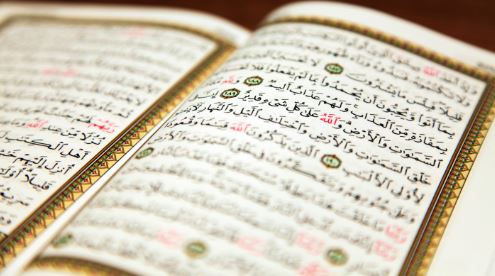Interesting facts about the Arabic language
October 18 , 2021Interesting facts about the Arabic language
by Target Language Translation Services
- October 18 2021

December 18th marks Arabic Language Day, the day when the General Assembly approved Arabic as one of the official languages of the U.N. in 1973 as the fifth most widely spoken language in the world in 2016. When a language is spoken in so many places by so many different people, it is simply going to develop some interesting characteristics and statistics along the way. Here are some interesting Arabic language facts.
Arabic has influenced a great number of languages.
Arabic has influenced a great number of languages, including most European languages as well as Asian and African languages: Persian, Turkish, Urdu, Kurdish, Bosnian, Kazakh, Bengali, Hindi, Malay, Maldivian, Indonesian, Pashto, Punjabi, Tagalog, Sindhi, Hausa, Amaric, Swahili, Kazakh, Turkmen and Uzbek. You will be able to read in any of these languages, even though you might not understand! Some of the most common English words, such as coffee, average, ghoul, loofa, magazine, candy, caravan, cotton, giraffe, guitar, jar, lilac, magazine, sugar, talisman and lemon, are of Arabic origin, as well as “alcohol”, “algebra”, “algorithm” and “alkaline”. The article “al” means “the” in Arabic.
In mathematics, the algebraic letter ‘x’ which represents an unknown number actually originated from the Arabic word “shay” or “thing” in English. It eventually became translated to ‘xay’ in Spain so its final abbreviation became “x”. And as long as we’re talking math and numbers, remember that it’s the Arabic numerals that replaced the Roman numerals centuries ago.
Written Arabic uses an abjad instead of an alphabet.
One of the qualities that make Arabic a difficult language to learn is the fact that its writing system doesn’t follow an alphabet but an ajbad. An ajbad is a form of writing in which each letter stands for a consonant and not a vowel. The vowels are indicated with vowel marks rather than a full letter.
There are more than 20 countries in which Arabic is the official language.
There are more than 20 sovereign states where Modern Standard Arabic is the official language. Some of these countries have two official languages, including everything from Kurdish and Somali to English and French. There are also some other states and territories with limited recognition where Arabic is the official language. Some countries that use Arabic as their official language are as following:
Arabic Speaking Countries in Africa: Algeria, Chad, Comoros, Djibouti, Egypt, Eritrea, Libya, Mauritania, Morocco, Sudan, Tunisia and Tanzania.
Arabic Speaking Countries in Asia (Middle East): Bahrain, Iraq, Israel, Jordan, Kuwait, Lebanon, Oman, Palestinian territories, Qatar, Saudi Arabia, Syria and United Arab Emirates.
Arabic language belongs to the Afroasiatic family.
In the family tree of languages, Arabic belongs to the Afroasiatic family which is spread across the Middle East and a large part of Africa, consisting of 6 branches and around 300 living languages and dialects and is spoken by more than 350 million native speakers. Arabic is the most widely spoken language in this family.
Arabic has sounds that are not in other languages.
When you’re learning a new language, find it difficult to pronounce words in Arabic, due to the some of the sounds being uncommon in other widely spoken languages. For instance, ‘ح’ is a ‘h’ sound that is only found in Arabic, which has something of an “h” sound, but you could also just call it a “breathy” sound. To get an idea of how this is pronounced, imagine breathing on a window pane to create a mist.
Arabic is at least 1,500 years old.
Classic Arabic can be traced all the way back to the sixth century, but earlier versions of the language existed including the Safaitic dialect, an old Arabic dialect used by the pre Islamic nomadic inhabitants of the SyroArabian desert which dates back to the 1st century.
Arabic words are written from right to left.
Unlike many other widely used languages, Arabic words are written from right to left, and Arabic numbers are written from left to right. Some Arabic letters also change form depending on where they are placed in a word (beginning, middle, end, or standalone).
There are around 14 words that describe “love”.
In the Arabic language, there are at least 14 words for ''love''. Each one conveys a different stage in the complex process of falling in love. For example, “hawa” describes the initial attraction towards someone, “huyum” the loss of reason that follows, and “ishq” a blind desire.
There is no “to be” verb in the present tense.
The “to be” verbs in English include: am, are, is, was, were, been, and being. While these words exist in Arabic, they are not used in the present tense (so, were and was are still valid).
For example, you wouldn’t say something like: “My name is Bob.” You’d simply say: “My name Bob.”
Arabic has no capital letters.
The Arabic alphabet does not include capital letters. Most often, in written form, quotation marks are used for emphasis instead.
This article is reprinted from Cactus Worldwid, Arab Academy and Dadafish.
If there is a copyright, please inform us in time, we will delete it right the first time.